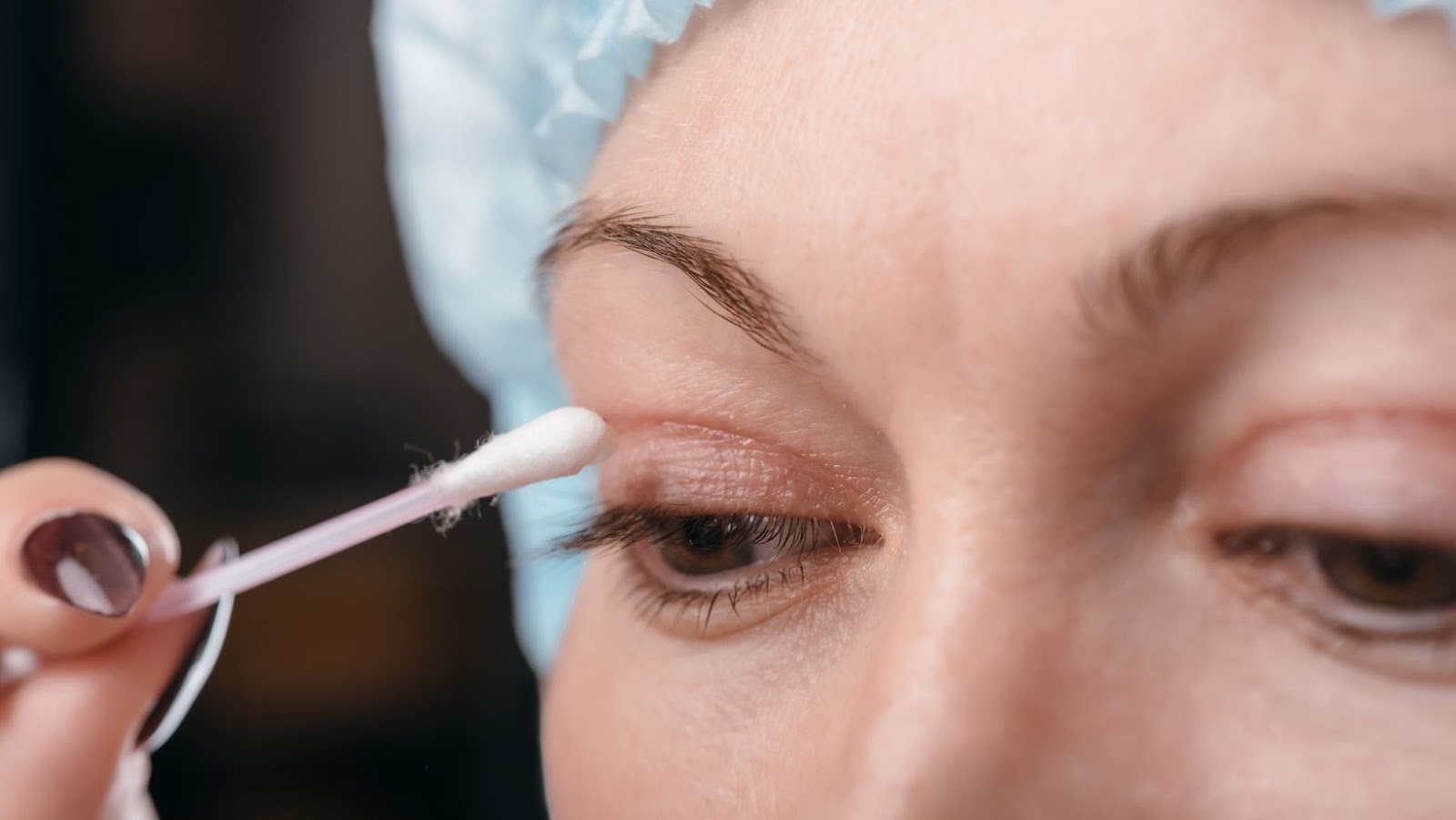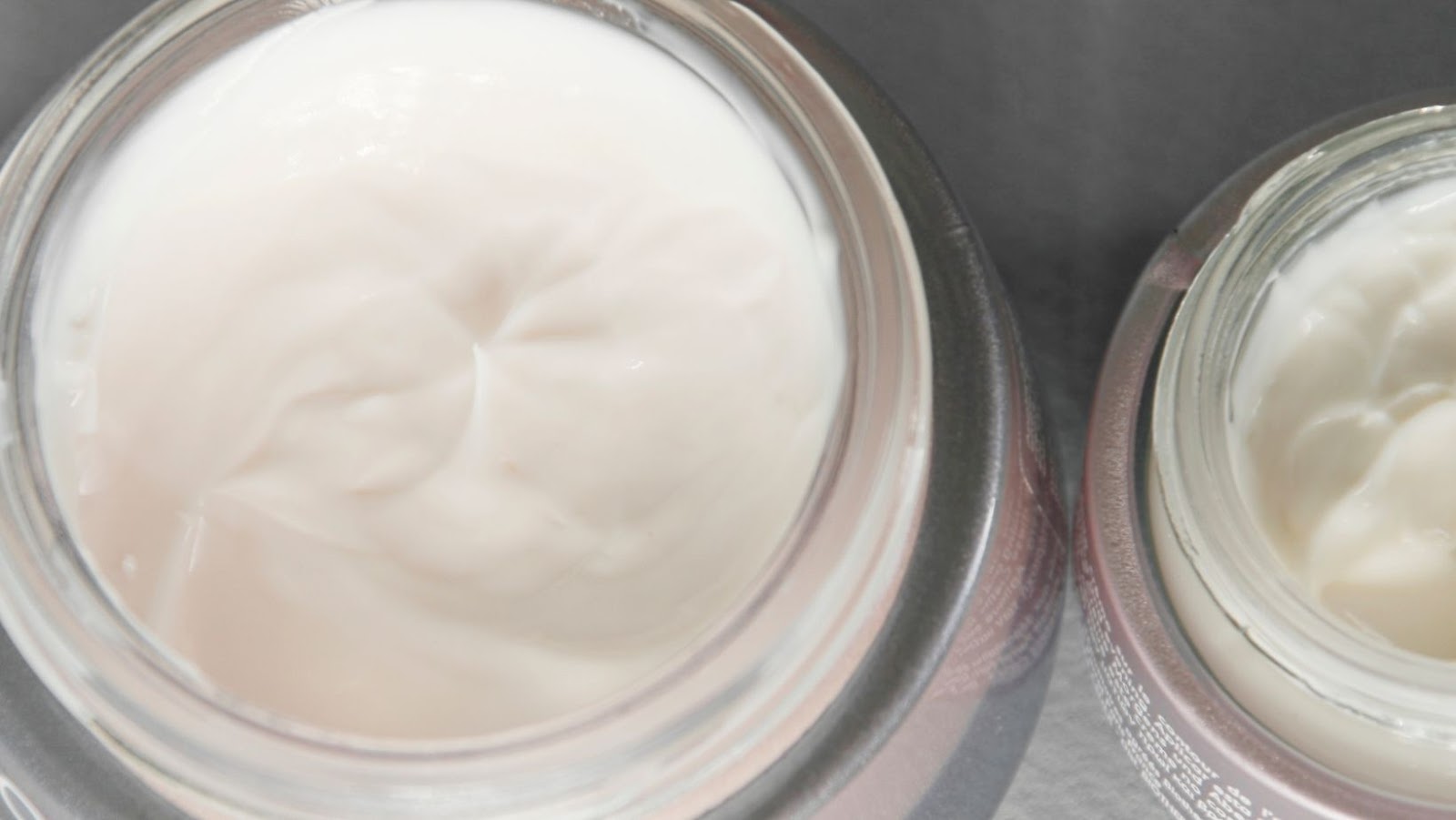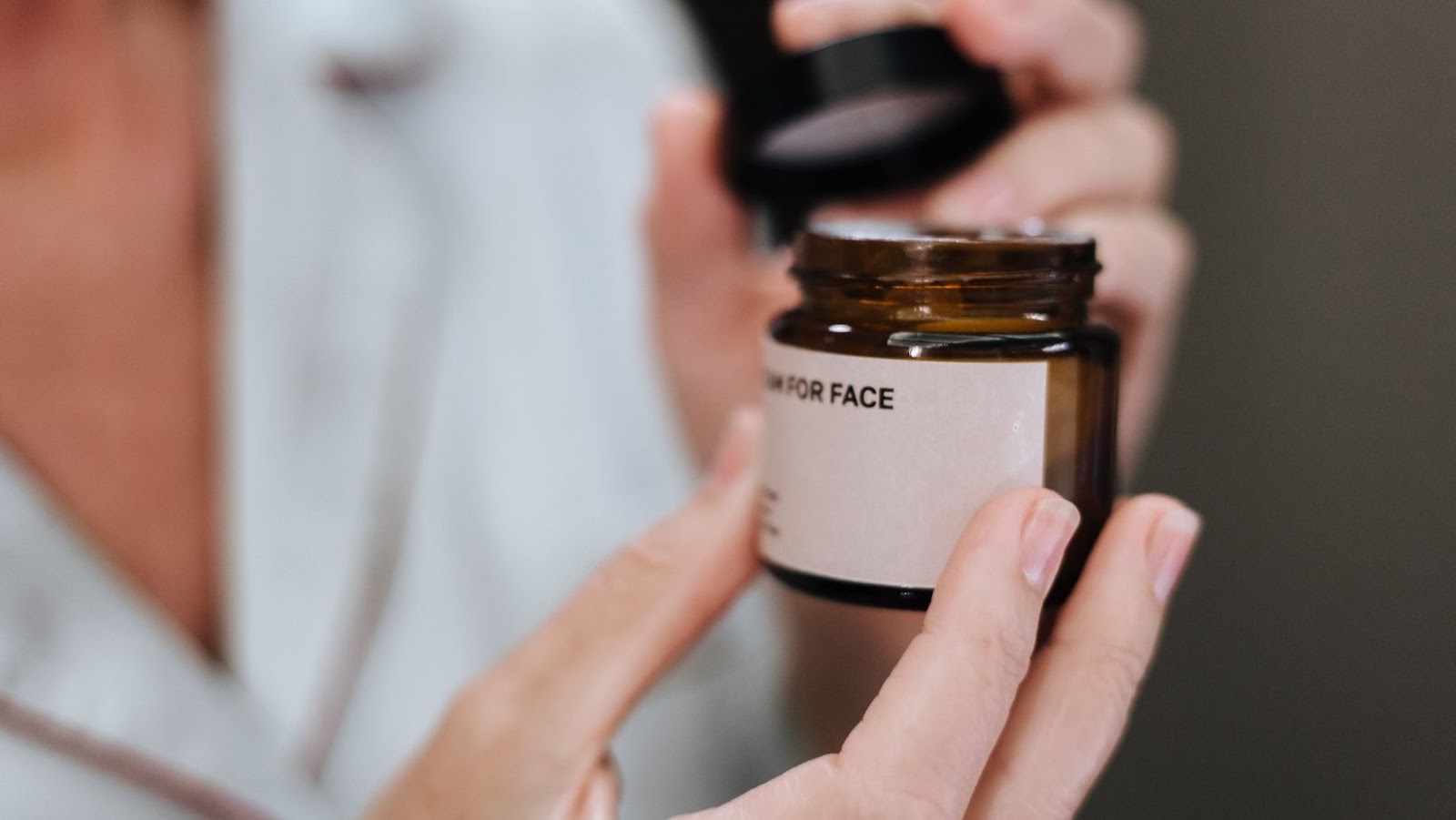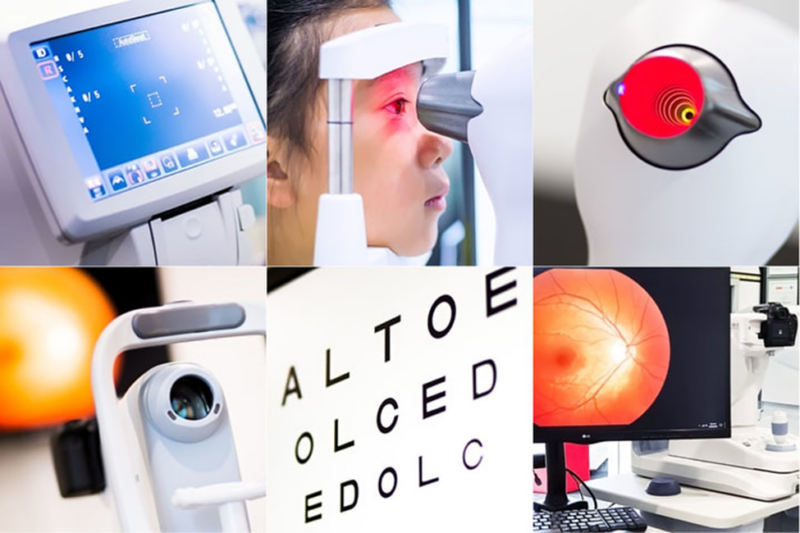
The skin on our eyelids is different from the skin on other parts of our face and body. Our eyelid skin is much thinner and more delicate, which requires a special level of care when it comes to topical applications. One item that may not be suited for the thin eyelid area is some types of eye cream. In this article, we will explore why you should not put eye cream directly on your eyelids.
- Thinner and more delicate skin
- Not suited for thin eyelid area
- Do not put eye cream directly on eyelids
Why can’t you put eye cream on eyelids
The anatomy of the eyelids is an important factor to consider when it comes to skincare. The skin on your eyelids is thinner and more delicate than the skin on the rest of your face and body, so it requires special care to keep it healthy. Understanding the anatomy of your eyelids will help explain why you can’t put eye cream on them directly and what other skincare techniques should be used instead.
- Using a gentle cleanser to remove makeup and dirt
- Applying a light moisturiser specifically designed for the eyelids
- Using a hydrating eye mask once a week
- Using a gentle eye serum to reduce puffiness and dark circles
Structure of the Eyelid
The anatomy of the eyelid includes a number of distinct parts, each with its own purpose and characteristics.
The eyebrow is the upper part of the eyelid, made up of two rows of hairs. The hairs are positioned to shade and protect your eyes from the sun’s glare, as well as to move tears away from your eyes when you cry.
The orbit is the space around your eye where you can find the levator muscle, which lifts the eyelid. The orbital septum is a sheet of connective tissue that attaches to both sides of the eyebrows and runs down toward the edge of each eye. This helps keep fat in place and helps make it possible for you to open or close your eyes independently of each other.
The eyelids themselves are made up of three layers: skin, muscle and conjunctiva (lining). The skin on your eyelids is thinner than other parts of your face; it contains fewer oil glands and allows fluid to escape more quickly than thicker skin elsewhere on your body. This makes them prone to cracking or becoming irritated easily when rubbed or exposed to irritants such as makeup or lotion. That’s why it’s important not to put eye cream directly on this delicate area — instead, use enough moisturiser on other parts of your face that touches the eye area so that they don’t get too dry or cracked-looking!
Skin on the Eyelids
The skin on your eyelids is much thinner and delicate than the skin elsewhere on your face. It contains fewer oil glands, making it less efficient at locking in moisture, which can make eyelids especially prone to ageing. Because of its thinness and delicate nature, many people are afraid to apply products like eye cream to their eyelids. However, some ingredients in certain eye creams can actually be beneficial for maintaining the health of this important area of skin.
The eyelid’s epidermal layer is made up of only two cell layers compared with 15-20 cell layers found elsewhere on the body, accounting for its increased sensitivity. This thinness also creates a higher concentration of nerve endings leading to a heightened sensitivity as well as an increased chance for irritability or contact dermatitis (itching and redness) in response to potential allergens or strong ingredients.
Therefore, when selecting eye cream specifically designed for use on the eyelids it’s important to select one formulated with a select group of natural ingredients that are delicate enough to work with this sensitive area, but still effective enough in combating signs of ageing like wrinkles and dark circles. Additionally due to their natural properties those same ingredients should have potent antioxidant benefits that contribute towards healthy looking skin while replenishing lost moisture around the eyes leaving them brighter and smoother than before.
- Thin skin on the eyelids
- Fewer oil glands
- Increased sensitivity
- Potential for irritability or contact dermatitis
- Select group of natural ingredients
- Potent antioxidant benefits
The skin on your eyelids is much thinner and more delicate than the skin on the rest of your face. It is therefore important to take care not to put eye cream on the actual eyelids. This is because the skin is more likely to absorb the cream and cause irritation or even infection.
In this article, we’ll explore more reasons why you can’t put eye cream on your eyelids:
- The skin on your eyelids is much thinner than the skin on the rest of your face.
- Eye cream can easily be absorbed by the skin on your eyelids.
- Absorption of eye cream can cause irritation or even infection.
Risk of Irritation
Applying any moisturising cream to the area around your eyes can lead to problems such as itching, burning, stinging or redness. Eye creams are specially formulated with thicker ingredients meant to stay put when applied to the eye area—ingredients like petrolatum or mineral oil that are too thick for eyelids may irritate the sensitive skin. Additionally, eye creams often contain anti-aging and wrinkle-fighting ingredients that can be irritating when applied directly on the lids.
It is also important to keep in mind that just like all areas of skin, the eyelid region is delicate and absorbent; any product you put on your skin will be absorbed into your body through some degree. This means that potential harmful ingredients in eye cream can easily enter your bloodstream and circulatory system if you apply it directly to your eyelids. Therefore, it is essential to use an eye cream that is free of harsh chemicals and possible toxins—look for labels with natural and organic ingredients for maximum safety.
If you have noticed problems around the eyes due to skincare products you should immediately discontinue use and consult a physician if necessary. It is also wise to first do a patch test on any product—regardless of whether it’s labelled as suitable for application near the eyes—by applying a small amount behind the ear or on the forearm before completely covering your eyelids in cream or lotion.
- Be aware of common issues associated with eye creams.
- Take note of proper application measures.
- Look for labels with natural and organic ingredients for maximum safety.
- Do a patch test before applying eye cream.
By being aware of common issues associated with eye creams and taking note of proper application measures, you can protect yourself from potential irritation while still enjoying a youthful appearance!
Risk of Infection
The skin on your eyelids is thinner and more delicate than the skin anywhere else on your face, so it is important that you use eye cream specifically designed for this area. Eye cream must be formulated to care for and protect the sensitive skin found around the eyes—especially the eyelids. While it may seem harmless to put facial or body lotion or moisturiser on your eyelids, there are risks of infection due to improper product application and potential allergens in certain moisturisers.
Using a different type of cream or moisturiser around your eyes can cause stinging, irritation and redness due to ingredients like fragrances and preservatives not meant for use in this sensitive area. In addition, certain ingredients found in traditional facial and body creams like sulphates and parabens may cause an allergic reaction if applied near your eyes due to their potentially irritating effects.
Another risk associated with using facial or body creams near your eyes is that the products could interfere with contact lenses, trapping them beneath the product creating a breeding ground for bacteria which could lead to infection. Additionally, if you apply too much product onto the delicate eyelid area as you normally would with any other cream/lotion/moisturiser it could build up in this fragile region leading to infection or chalazion (a lump on the eyelid caused by blockage of the meibomian gland).
- Risk of infection due to improper product application and potential allergens in certain moisturisers
- Stinging, irritation and redness due to ingredients like fragrances and preservatives
- Interference with contact lenses and bacteria breeding ground
- Build up in the delicate eyelid area leading to infection or chalazion
For these reasons, using eye cream specially formulated for this delicate area is strongly advised by skincare experts in order to avoid any potential risks from using other products not meant specifically for use near our eyes.
Risk of Allergic Reaction
Using eye cream directly on your eyelids is not recommended because of the risk of an allergic reaction. The skin on your eyelids is much more delicate and thinner than the skin on the rest of your face, making it more vulnerable to irritation from certain ingredients. Even products that are labelled as “all natural” or have fewer chemical ingredients can still cause a reaction in people with sensitive skin. Some of these reactions could include redness, burning, itching or swelling in the area where the product was applied.
Additionally, many eye creams contain heavy fragrances and mineral oils which can be absorbed quickly by the delicate skin around your eyes and potentially cause adverse effects like watery eyes and skin irritation due to clogged pores. Some active ingredients may also irritate contact lens wearers directly if applied too close to their eyes (within an inch).
For these reasons and more, it’s wise to apply eye cream cautiously on areas near your eyes but away from direct contact with the eyelids.
- Avoid direct contact with the eyelids
- Be cautious when applying eye cream near your eyes
- Be wary of heavy fragrances and mineral oils
- Be aware of active ingredients which may irritate contact lens wearers
Recommended Alternatives
The skin on your eyelids is thinner and more delicate than the rest of your face. This is why you cannot put eye cream directly on your eyelids. Eye cream is great for the rest of your skin, but since the skin on your eyelids is so thin, it’s not recommended to put eye cream on them. Fortunately, there are alternatives that can help you keep your eyelids looking and feeling their best. Let’s take a look at some of these alternatives.
- Cleanse your eyelids with a mild, non-irritating cleanser.
- Use sunscreen on your eyelids to protect them from the sun’s UV rays.
- Moisturise your eyelids with a light, non-greasy moisturiser.
- Avoid rubbing your eyes and eyelids.
- Eat healthy and stay hydrated to keep your skin healthy.
Use a Lightweight Moisturizer
Although eye cream cannot be safely used on your eyelids due to its thick, emollient formula and potential irritants, there are alternative options. For the delicate skin on your eyelids, a lightweight moisturiser is ideal. Look for a product specifically designed for the eye area that is free of fragrances and other potentially irritating ingredients known to cause redness or breakouts.
In general, you will want to look for skin care products that are labelled as “hypoallergenic,” “noncomedogenic” or “dermatologist-tested,” as these have been tested less likely to cause an allergic reaction or irritation than those without these qualifiers. Options with vitamin C or hyaluronic acid are great choices because they can help minimise redness and soften fine lines around the eyes.
- When applying a moisturiser of any kind around the eye area, it is necessary to use gentle touches and keep the product away from the sensitive lash line.
- Because this area can be prone to dryness and dark circles, regular application of an appropriate moisturiser can help improve hydration levels both in this area specifically as well as throughout your face in general.
Use a Hypoallergenic Eye Cream
Using a hypoallergenic eye cream is the best way to take care of your eyelids. Hypoallergenic eye creams are specifically formulated with beneficial ingredients that target nourishing and hydrating delicate skin around the eyes, without causing adverse reactions. It is important not to use harsh, strong products on the eyelids, as these can cause irritation and even damage the fragile skin around the eyes. Additionally, some stronger formulas can cause iris pigmentation or react with contact lenses.
In contrast, when you choose a hypoallergenic eye cream, you’re ensuring that your product has been carefully tested on sensitive skin and approved as gentle enough for use on or near the eyes. Popular ingredients in these formulas include:
- Natural oils such as argan oil and jojoba oil which are beneficial for both their moisturising and anti-inflammatory properties.
- Rosehip seed oil, aloe vera, vitamin E to protect against environmental stressors.
- Antioxidants like green tea extract to reduce signs of ageing.
- Calming agents such as chamomile extract for soothing benefits.
By using a hypoallergenic eye cream tailored for sensitive areas you can take proper care of your delicate eyelids while enhancing their naturally healthy appearance.
Use a Gel-Based Product
Using a gel-based product rather than an eye cream can be beneficial if you want to apply something to your eyelids. Eye creams usually contain heavier ingredients that can actually clog the pores and intensify sensitivity around the delicate area of the eyes.
Gels are much lighter and thinner in texture, which makes them ideal for thinner, more delicate skin. They also penetrate deeper into the skin’s layers and provide better hydration than thicker creams. The majority of gels also contain several antioxidants and retinol which can help sooth, brighten and protect the eyes from environmental damage.
You should also look for ingredients such as hyaluronic acid, peptides and retinoids to help keep skin around your eyes moisturised, smooth out wrinkles/fine lines as well as brighten up dark circles over time. While there is no “one size fits all” when it comes to skincare, using a gel-based product on your eyelids might be a great alternative approach that could give you that extra layer of protection without irritating them further!
Conclusion
In conclusion, the skin on your eyelids is much thinner than skin elsewhere and is particularly delicate, making it more prone to sensitivities. Eye creams generally contain potent ingredients that can be irritating to the delicate skin of your eyelids. Hence, you should take extra precautions when applying eye cream on this area and avoid getting it onto your eyelids.
When it comes to taking care of your eyes, preservation is key; always be sure to pay careful attention when applying eye cream and other products near the area of your eyes.















